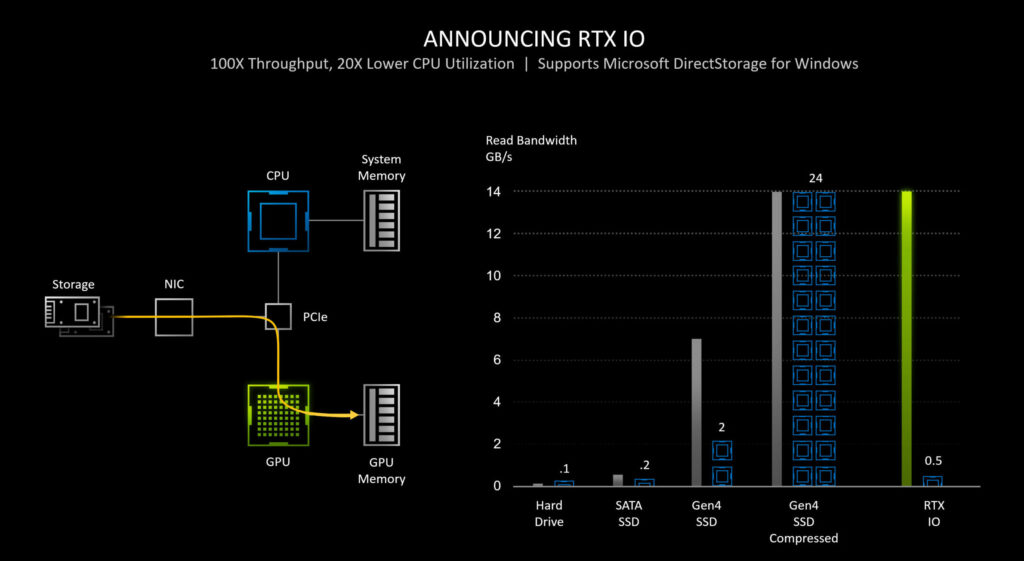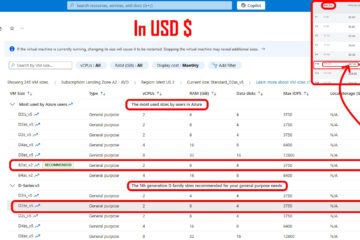Microsoft Xbox Velocity Architecture is a new hardware and software platform to make the XBox Series X today and PC’s in the near future run dramatically faster using commodity components.
There are four building blocks of Velocity Architecture which are easy to understand.
Here is our video explanation of the Velocity Architecture:
Microsoft DirectStorage is the “drive” storage system that allows the XBox Series X today, and PC’s by the end of 2021, move files to the GPU thousands of times faster than they have in the past.
The four basic building blocks of Xbox Velocity Architecture are:
1 – PCI Express Connected NVME Solid State Drives:
If that is confusing you, lets simplify it. The PCIe bus is what connects the (typically white and blue) expansion slots inside your PC and it is many times faster than the old SATA hard drive connector. The old XBox One X had a theoretical maximum throughput of 120MB/s but the new XBox Series X can move 2.4GB/s which can be compressed to 4.8GB/s second. That is up to 40 times faster, or 4000% improvement.
2 – Hardware Compression & Decompression:
To move even more data faster, DirectStorage requires the HARDWARE to be able to decompress files on the fly so your CPU and GPU are not taxed. Compression of data on the drive allows it to move about twice as much data to the GPU than it could in the past.
3 – Direct Storage API Software:
Current/Old API’s (the ‘calls’ that software developers use to request data) require the drive storage to handle acknowledgements of things that don’t really need to be confirmed. The new API’s allow the system to ignore many of those requests which makes everything faster. Microsoft calls this there DirectStorage API and they just announced it is coming to PC in 2021.
4 – Sampler Feedback Streaming (SFS):
Games often have very high resolution textures but depending on how far away a player is from an object (car, mountain, horse…) only a small amount of that texture is actually displayed. Sampler Feedback Streaming allows the GPU to discover what is actually going to display and request only the subset of the texture file that it needs. Microsoft says this innovation alone “results in approximately 2.5x the effective I/O throughput and memory usage“.
Microsoft Velocity Architecture Summary:
These four components of the Microsoft Velocity Architecture mean that instead of having software make a small number of large and slow storage requests, the system can now make tens of thousands of tiny requests to load the relevant portion of files that is needs to show you what the mountain in the far off distance looks like as you get closer to it.
This sort of speed also allowed for “Quick Resume” which allows you to nearly instantly start a game where you left off last time.
Testing has shown that Microsoft Velocity Architecture could make game loading and quick graphic changes can be 100 times faster than previous technology. While that is very impressive most people won’t see anywhere near that large a difference because:
- Some of this will only work on games using the new API calls and most older games don’t
- People get used to speed improvements VERY quickly and fail to recognize them
- On PC’s, Microsoft Velocity Architecture will eventually be completely functional but it will take a few years for that to happen and will be rolled out in parts. For example, if you have a PC that supports and NVME SSD, Microsoft will have DirectStorage working on PC’s in 2021, BUT you will not likely have a hardware that supports decompression or SFS for years.


1 Comment
Email Checker · October 30, 2022 at 6:19 pm
There are other disadvantages too